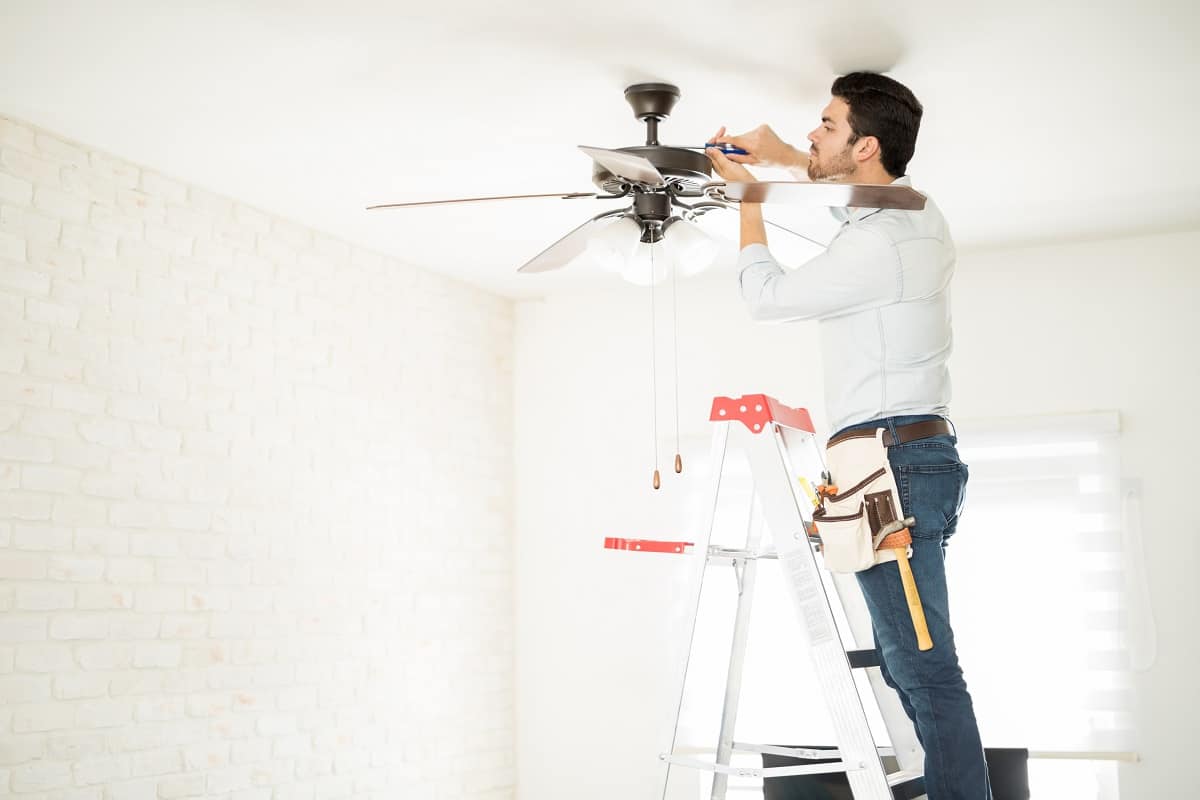Having noisy, loud, disrespectful neighbors must be one of the most annoying things ever. You come home after a long day at work, wanting to simply relax and watch a show in silence, when all of a sudden you hear your neighbors fighting, yelling, their baby screaming, and their dog barking. Such a scenario sounds pretty frustrating, and it can become a genuine problem for your mental health if it’s not resolved.
Now, you can talk to your neighbors and imply that they’re being too loud, but this has never solved anything; more than all, it generally creates an awkward relationship between you and your neighbors. But, what you can do is soundproof your walls. You can make the unbearable noise from your neighbors go away in just a few simple steps.
Therefore, in the following paragraphs we’ll guide you through the whole process, so without further ado, let’s get right into it!
Soundproofing Walls: Step By Step Guide
Now, the reason you hear your neighbors fight and yell is mostly their fault; sure, they’re being inappropriately loud and don’t plan to stop and change their behavior for the sake of everyone’s sanity. However, there might be an issue with your walls as well. Sometimes, the walls between the apartments are just too thin to keep all the noise from getting through. But, regardless of what the issue might be, we have a solution for you. Here are some of the steps you can take to soundproof your walls, effectively, once and for all.
Step 1: Purchasing Soundproof Panels
Soundproof or acoustic panels are probably the most commonly used tools when soundproofing walls. They’re available in almost any DIY, home repair shop, or you can simply order them online. Soundproof panels are made out of dense foam, which makes them super absorbing and protective against airborne noise.
However, they will also mitigate the sound made by loud footsteps, children jumping around, even noise from home repair situations. These panels are placed and secured into the walls, so to make them more stylish and interior-friendly, you can choose between different colors and designs.
If soundproof panels seem to be a bit excessive for your needs, you can always go for a more available, cheaper option, which is egg boxes. These boxes are super useful since they’re pretty cheap but almost as effective as the soundproof panels. Sure, they don’t look as stylish, but you can paint them and make them an interesting, unique wall decoration, for example.
- Check out the Soundproof Wall Panels on Amazon, or the Acoustic Pro Fabric Panels from Second Skin Audio!
Step 2: Using Soundproof Plasterboard
In case you have thin walls (and loud neighbors on top), then you should definitely not skip this step; acquiring soundproof or acoustic plasterboard. This plasterboard will add an extra layer of thickness to your wall and create soundproofing protection from all the noise. It will also prevent you from being potentially loud to your neighbors. You just need to secure the plaster-boarding onto your wall, and that’s it. If you want to make things even more soundproof, you can add the soundproof panels onto the board as well.
Step 3: Installing a Fake Wall
If you have a spare buck to spend, we would recommend this step as well; installing a fake wall. Now, this of course applies to cases of thin walls. A fake wall will add up to 2 inches of extra wall thickness, with an extra space between the two walls for more insulation.
As a result, you will have a better soundproofing effect and mitigate noise from the neighbors. Installing a fake wall is generally the best, most effective, soundproofing method. Again, consider that this is the most expensive soundproofing method where a fake wall can go up to several thousands of dollars.
Step 4: Soundproofing the Doors
It may not seem like it, but the doors in your apartment can also contribute to the increased noise and loudness coming from the neighboring apartment. Nowadays, doors are generally made hollow, which isn’t something that will help with soundproofing between rooms, or even apartments. We would generally recommend people replace their old doors with new ones, but this would turn out to be an expensive endeavor.
But, some of the things you can do is first fill in any gaps/holes/edges in the doors using sealants (neoprene strips or vinyl, both airtight), use door sweeps to close the gab at the bottom of the door, or simply place soundproofing panels on the doors as well.
- Check out the GREAT STUFF Insulating Foam Sealant on Amazon!
Step 5: Using Soundproofing Curtains
If you still require soundproofing, and the neighbors still seem to be as loud as before, then you need to install a soundproofing curtain in the room that shares the same wall as your neighbors. Soundproofing curtains are made out of heavy materials which absorb and block sound. These curtains are excellent if you want to mitigate the noise from the outside by placing them right at the windows. But, you can also use the curtains to split the room and create a soundproof area inside the same room.
- Check out the RYB HOME Sound Absorbing Curtains on Amazon!
Step 6: Soundproofing the Ceiling
Sometimes, the noisy neighbors live in the flat above you; what can you do to soundproof the walls in that case? Well, soundproofing the ceiling is a legit option worth trying out. Now, if the neighbors annoy you with loud TV and music noise, then ceiling soundproofing might work. However, if you’re dealing with impact noise, or noise made by loud footsteps, jumping, or banging, then the vibrations are creating the issue, not the noise.
Now, what you can do is install a false ceiling. This is pretty expensive, usually a couple of thousand dollars for one room only. However, this is the most effective solution that will deal with both impact sound and airborne noise. You can also apply the aforementioned soundproof panels, which is a much cheaper option, but also the most unlikely to work.
Another option is to ask your neighbors to soundproof their floor. If you’re on good terms, you and your neighbors can discuss effective options to mitigate the noise. Using an underlay for laminate flooring is a good option since it is specifically made for soundproofing purposes. The neighbors could also purchase a thicker, high-quality carpet if they don’t want to be bothered with the laminate underlay.
Step 7: Filling the Empty Space
The only thing left to do is to fill the empty space in front of the walls. You can do this by placing bigger furniture against the walls, like a closet, bookshelves, a sofa, or even plants and general room decorations. These are probably the items you already have in your home. So, by simply reorganizing the furniture, you can create a soundproofing effect, without spending a penny. Of course, this doesn’t guarantee you will stop hearing the noises from the neighbors. But, it will surely serve as a quick fix for the situation, until you figure out something else.
Step 8: Talking to the Neighbors
This is your final option unless you want to sell your apartment or rent somewhere else. Talking to the neighbors might help lower down the noise levels, or at least the frequency of the noises. Check with your neighbors whether they find you and your activities loud as well. If they do, then you’re sharing thin walls which both you and your neighbors can quickly fix by using soundproofing panels on both sides.
If nothing works, and your neighbors are unreasonable, just remind them that you can submit a noise complaint form, which will have them be investigated and potentially fined for noise complaints. It would be best if you record the noise using your phone, for future evidence as well.
This may seem like a drastic move, but there are some really unreasonable neighbors people have to deal with every day. People tend to forget they share a building with hundreds of others. And, if they need a reminder for that from time to time, well, a noise complaint form might work pretty well.
Of course, we always advise people to deal with these sorts of issues with the neighbors directly; try to talk it out, offer solutions and alternatives, and offer to pay for half of the work (if they decide to go for laminate underlayers or soundproofing panels), might just make them reconsider their behavior and help you out.
Final Thoughts
It can be pretty difficult to deal with loud neighbors, especially if they have kids and pets. However, if you’re on good terms, it is always for the best to simply talk to them and express things that bother you. Try to stay respectful and understanding, but point out that some things can be done to improve the noise issue very easily. If the neighbors agree, offer to contribute to the solution by either paying a certain amount or by doing the job on your side of the wall. However, if the neighbors are rude, brush off your attempts at the solution, and continue to create noise, then filing a noise complaint is your last resort.










